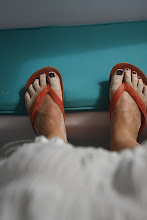.jpg)
I met Dave at the pub through a friend of mine. Dave makes beautiful surfboards out of sustainable materials. And with the Australian Government dolling out $900 willy nilly to stimulate the economy – I've just decided how I'm going to spend mine. I asked Dave some things.
Q.I'm blind and just snapped my old board on a badly timed road-crossing adventure, so I need a new board . And I would also like this board to attract members of the opposite sex, why should I ride your board and not the one the Quicksilver rep is trying to spruik me?
A. Ours are stronger and more durable. Lower overall environmental impact and less hazardous to construct. Light weight. Snappier flex characteristics = smoother faster ride. Beautiful Australian aesthetic due to local timber with unique grain patterns.
Q. Timber hey? So you DO cut down trees, why is that any better than using fibre glass?
A. Timber is all sourced from Australian managed plantations certified by the Australian Forestry Standard and Good Environmental Choice Australia. Species used are fast growing species that can be sustainably managed.
Q. So it weighs a bloody tonne hey, I ain't no Hawaiian Duke or animated penguin, will it sink?
A. We still use a foam core. This is necessary to keep the boards at a modern weight. We use a type of foam called Extruded Polystyrene which is waterproof, recyclable, has superior strength properties and does not contain isocyanates like traditional polyurethane foam. It was the use of isocyanates that led to the closure of Clark Foam (the worlds largest surfboard blank manufacturer) in the United States a couple of years ago. Most boards made in Australia still use this type of foam. This traditional foam is not recyclable.
Q. How do they ride? Are they heavier, flimsier, quicker, last longer etc.?
A. The ride is smooth and fast. Our boards are a comparable weight to a standard sanded finish polyester board and lighter than a gloss finished polyester board. Due to the composite glass/timber construction we use the boards are extremely strong and don't get pressure dents on the deck like standard boards. It is our goal to design boards that can be passed on to the next generation rather than ending up as landfill.
Q. Why didn't you just go and shape boards with all of the traditional materials and get rich quick like the rest of them?
A. I used to shape boards out of traditional materials but a chain of events led to me being obsessed with doing something better. I studied Environmental Science at University so always had an increased awareness about the need to lower our consumption and the impact of our products.
Often returning from surf trips with snapped boards always left this feeling of guilt and after years of shaping standard boards I was concerned about the impact this was having on my own health. When I first started Treehouse I had been living overseas and reconnecting with Australia made me really want to create boards that also had a connection to the Australian environment...that had a real Australian character about them. I put over three times the amount of labour into each of these boards than I was putting into making traditional boards...so it definitely makes things harder financially but its a passion. I have no interest in shaping boards out of traditional materials now.
Q. What has the response been?
A. The response has been really positive so far. The boards always attract a lot of attention on the beach and all of my customers are loving riding them. I often get emails from customers telling me about a great surf they just had and how much fun they had on the board. On the other hand there are still the sceptics out there who think that a modern surfboard needs to be white and have three fins but you can't please everyone. Quite a few of those skeptics now own one of our boards after trying them.
Q. What do you think is the biggest environmental challenge facing the surfing industry?
A. I believe the biggest initial challenge is to change the culture of surfing. Many surfers and surfing based organisations are very environmentally aware but for a lifestyle that is so closely linked with nature I think as a group and as individuals we can do a lot better. Lets face it...we drive to the beach...we fly overseas and jump on boats looking for waves...we go though a surfboard every few seasons on average...we go through a wetsuit every few seasons...we buy surf brand clothes and boards mass produced in countries that may not have adequate environmental or working condition standards. I don't mean to paint that all in a negative light but we can be more conscious of our impact and make decisions to reduce that impact where possible. Surf culture has been very performance focused for a long time. I hope that we recognise what a special connection we have with nature and that this will infiltrate surf culture more in the future.
Q.Do any of the Pros/notables ride your boards?
A. No pros ride our boards and to be honest I can't see us approaching any pros to get them on our boards, it's not where Treehouse is at. The most notable person we could ever have on our boards is just the average surfer who loves surfing for what it is...a thrill, an escape, a connection with nature, an adventure. At the moment, our customers are exactly this and we build boards for them that suit their skill level and surfing style so that they can enjoy the ocean as much as possible.
Nice.
www.treehouseboards.com
www.thesealife.com.au

No comments:
Post a Comment